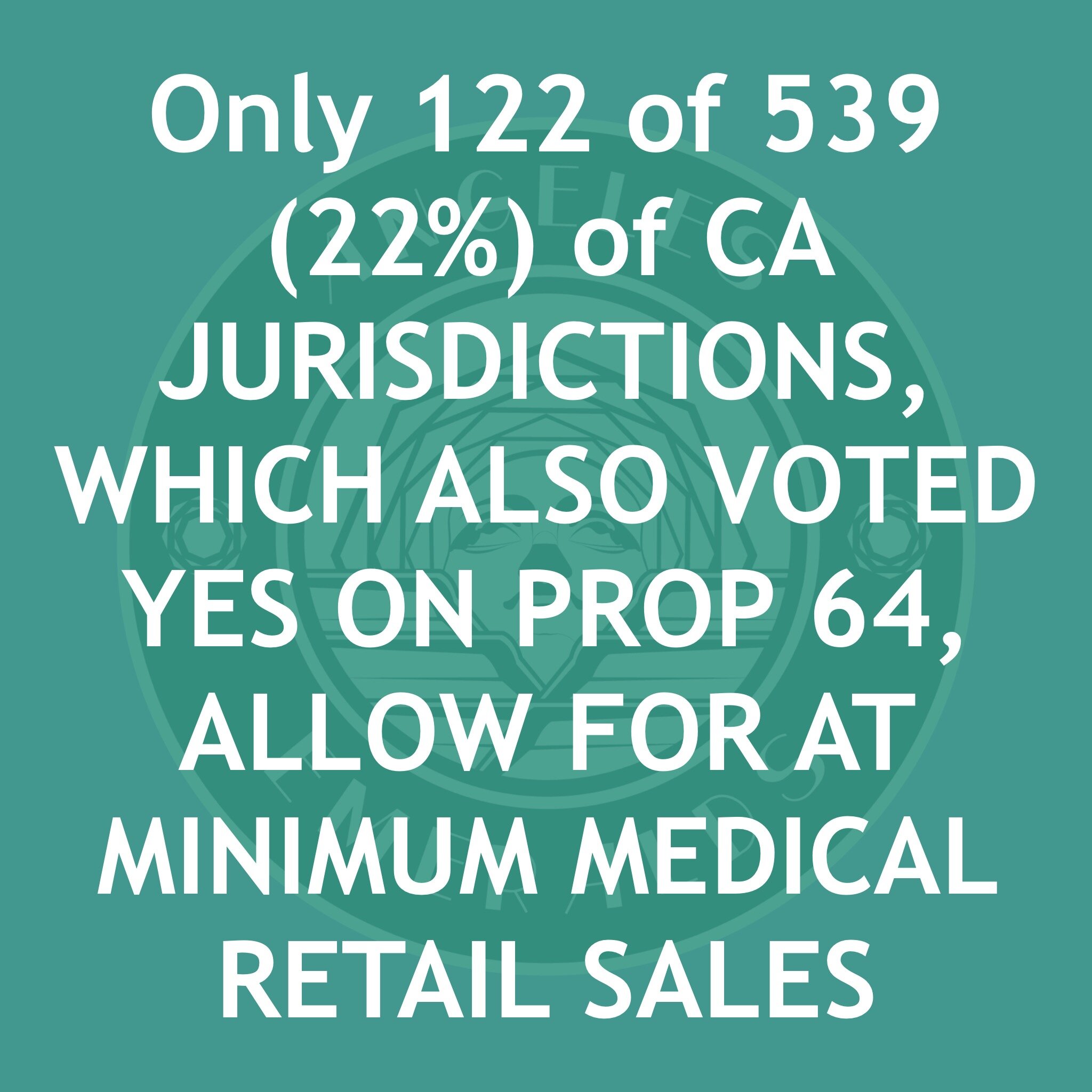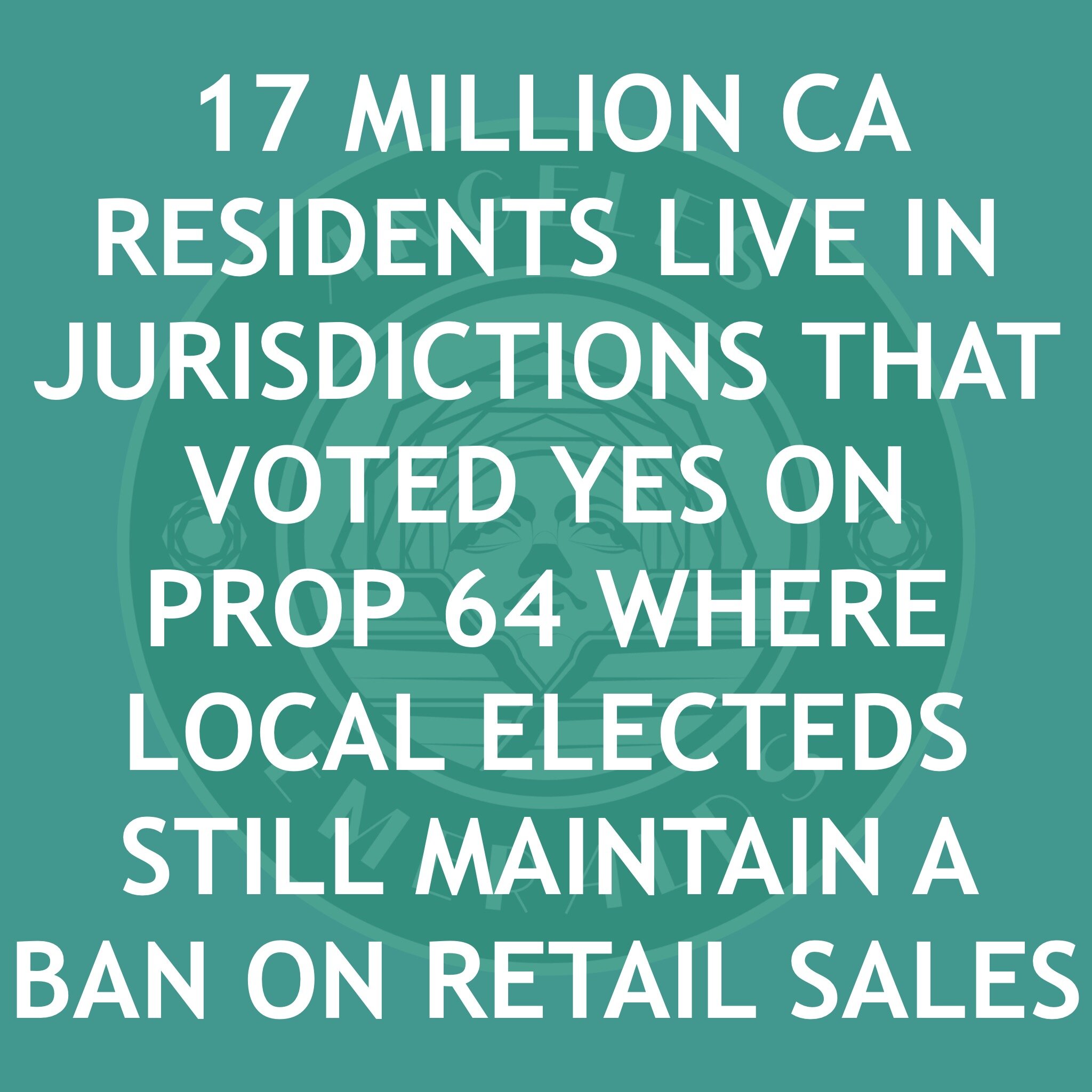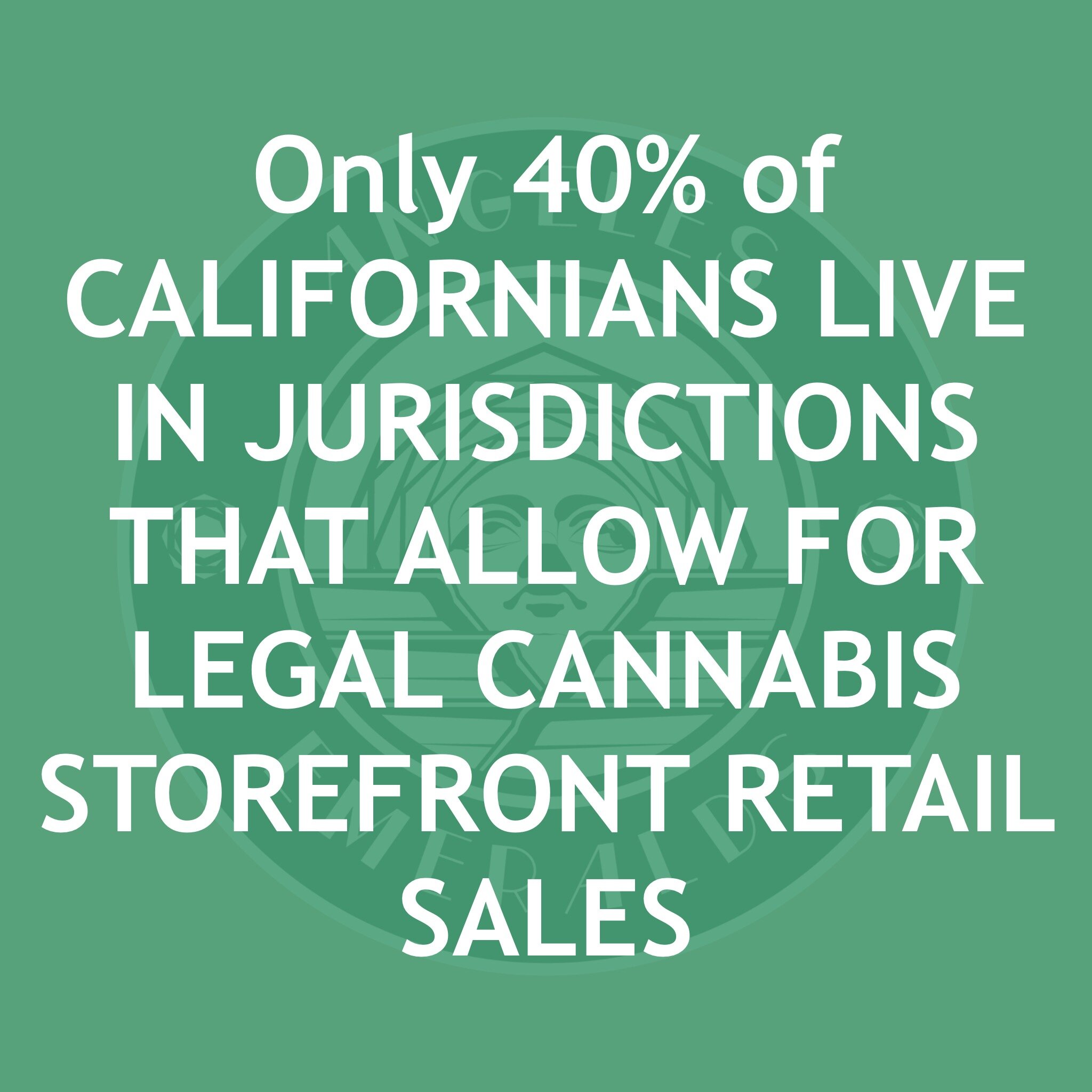Interactive Map of California Cannabis Legalization Progress
We are very proud to introduce an interactive map of California’s Cannabis Legalization progress.
Over the last year, we saw an increasing need for a visual tool to better explain the progress of cannabis legalization throughout California. Most residents assume that with the passing of Prop 64 Cannabis is legal to purchase everywhere. However, the interactive map shows the reality to be very different.
Similarly, local elected officials oftentimes lack clarity in understanding the will of their electorate, as well as the surrounding jurisdictions.
394 of 539 (nearly 73%) California local jurisdictions consisting of over 83% of the population passed Prop 64 in 2016, legalizing commercial cannabis activities.
Nearly 4 years later, the vast majority of local jurisdictions continue to maintain a ban against the will of their residents. Prop 64 was intended to provide pathways to licensure. Bans prevent that progress and only promote an illicit market threatening public health and safety. (Learn more about the issues below).
We encourage all to use this data to educate your community as well as local and state lawmakers.
We are still working on integrating the map into our site. Currently, it views best on a desktop computer. For a mobile version of the map please click on the button.
We welcome any feedback, corrections, and updates to any of the map data or features. Please contact us using the form below.
Last Updated: February 25, 2020
FEEDBACK
INTERACTIVE FEATURES
We plan to update this map with current data and add features over time. If you notice any mistakes, such as license types offered, voting percentages, etc, or would like to recommend potential future features, or find facts you’d like to share, we’d welcome any and all feedback.
Thank you!
Check out some of the current interactive features:
Automatic Calculation of Population
Automatic Calculation of Jurisdiction Numbers
Slider Bar and Input boxes for Voting Percentages
Scrolling List of Voting figures
Pivot table of License Types
Scroll over and Pop Up Summary on Map
JURISDICTIONS THAT VOTED YES ON PROP 64
VOTED YES ON PROP 64 AND ALLOW AT MINIMUM MEDICAL RETAIL STOREFRONTS
CONSEQUENCES OF LOCAL BANS PROMOTING A THRIVING ILLICIT MARKET
CALIFORNIA DEPARTMENT OF PUBLIC HEALTH
Vaping Crisis Due to Illicit Market
On October 17, 2019, three California Assembly committees (Health, Governmental Organizations, and Business & Professions) held a joint information hearing on “Vaping Tobacco and Cannabis Products: Health Effects and Deficiencies in Regulations and Current Law”
Regarding Vaping Associated Pulmonary Injury (VAPI), Acting State Public Health Officer of the California Department of Public Health testified the following at the hearing:
“133 Cases (of VAPI) in CA, 3 deaths, the median age has been 27. All of those cases have been hospitalized……. 78% of those cases have been interviewed…. Of the 78% interview, 81% self-report using THC. 38% use CBD, 57% use Nicotine. Most use a combination of these and only 10% report using only Nicotine. There was one case that did self-report purchasing from a confirmed licensed retailer. Many aspects of that are being investigated and that investigation is still ongoing.
The remaining cases [99%] who self-reported during the interview stated that they had purchased their vaping products from illicit street vendors, popup shops, social contacts, or unverified sellers. And by unverified sellers, we mean retailers that could not be located or verified to have a license.”
This evidence shows cause to believe that the vaping crisis is overwhelmingly due to the large illicit cannabis market.
For the latest data on the vaping crisis please click on the button below.
LA COUNTY DEPARTMENT OF PUBLIC HEALTH
Responsible Regulation May Reduce Harms to Public Health
JULY 15, 2019 LOS ANGELES – Today, the Los Angeles County Department of Public Health (Public Health) released a health study that provides new information on the health implications of cannabis regulatory options for local jurisdictions. The study found that unlicensed cannabis dispensaries in Los Angeles County—in contrast to those that are licensed—are overconcentrated in areas already burdened with health disadvantage and engaged in business practices that pose health risks to consumers. Areas of the County that are currently licensing dispensaries have seen a decrease in the number of unlicensed dispensaries, while the areas that maintain a ban have not.
“It is critical that we regulate cannabis in ways that minimize potential health risks,” said Barbara Ferrer, PhD, MPH, MEd, Director of the Los Angeles County Department of Public Health. “As in other areas of social policy, the potential risks posed by the legalization of cannabis should not be disproportionately experienced by low income communities and communities of color; we need to take actions to promote health equity through careful implementation.”
The report presents health-related data and recommendations addressing some key questions for local regulators
• Where should licensed cannabis dispensaries be located and how many should there be?
• What types of business practices should be promoted or incentivized among licensed dispensaries?
• What enforcement and assurance methods should be considered to eliminate unlicensed dispensaries and to promote product safety and safe driving conditions?
• How can cannabis taxation facilitate access to medicinal cannabis and support evidence-based cannabis prevention programs for youth?
The study concludes with 15 recommendations for local jurisdictions interested in minimizing health risks and promoting health equity as they consider regulation of retail cannabis businesses in their areas.









